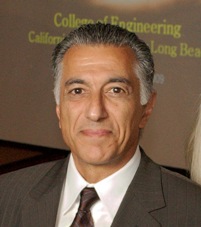Wright Sisters Must Take Flight!

March is Women's History Month, during which we celebrate the substantial contributions that have been made to society by women. The contributions that women have made in the United States throughout its history are innumerable, and are of course all the more commendable in light of the gender discrimination that so many had to face along the way.
This is without a doubt true for many of the women engineers in our nation’s history. The women who prevailed in this exceedingly male-dominated profession to bring their innovations into the world are truly to be celebrated, and this begs the question of what society would be like today if more women had been able to fully participate in the profession over the past century.
Though the US rose to extraordinary heights of prosperity in the early twentieth century through the technological breakthroughs of men such as the Wright Brothers, and managed to remain there throughout much of the century, many indicators suggest that we are now in steep decline. And this faltering, I fear, was inevitable.
Like a bird with a fettered wing, we have been operating out of balance since our beginnings. And now, with the technology marketplace having evolved into a fiercely competitive international arena, the US can no longer retain its lofty status as the world’s leading technological innovator without bringing the distinctive and formidable contributions of its women to bear.
Underscoring this need is the fact that the US has a substantial shortage of mid-level engineers, and is on-track to have far fewer by the end of this decade due to the retirement of the majority of the baby-boomers who joined the profession in response to the Sputnik challenge of the 1960s. And with the post 9-11 era has come visa restrictions that have resulted in a drastic reduction in the number of foreign-born, American-educated engineers who are contributing to American industry.
Women have been filling similar voids in other professions, as indicated by the fact that in 2010, for the first time in US history, more women than men earned PhD degrees. Unfortunately this has not been the trend in engineering, with only approximately 20% of all engineering doctorates presently being awarded to women.
Simple math tells us that, were women to fully participate in the engineering profession, our engineering workforce would nearly double. And in light of the fact that so few innovations ever find their way to economic success, such an increase in sheer numbers would truly matter.
But the full participation of women in the profession would yield us much more than just a simple increase in the total number of engineers. Women’s influence at all levels—the student pipeline, the professoriate level, the practicing engineering workforce, the engineering and technology management, and, above all, the policy making—would profoundly elevate the state of the art in American engineering.
The evidence overwhelmingly suggests that engineering teams that include women have a much broader range of perspectives with which to effectively evaluate the problem at hand, as well as more thorough communication and greatly enhanced collaboration. This culminates in an environment in which collective intelligence can come into play, with the whole of the team far exceeding the sum of its parts and far more innovative solutions being made possible.
So the obvious question, then, is how to most effectively encourage more young women to pursue engineering careers. This is a complex and enduring question, and its answer changes from one generation to the next.
Several recent studies point out the importance of family in influencing young women of the current “Millennial” generation—particularly those whose parents are college educated. One such study surveyed nearly 850 freshmen engineering students and concluded that over 40% of them gained their knowledge about the engineering profession from their families, with additional significant sources of influence including friends and acquaintances.
This speaks to the urgent need for raising awareness in every strata of society—especially with the intellectuals and the thought leaders of higher education—about the essential role that women can and must play in the engineering profession, and for getting the word out about the amazing innovations that women engineers are presently contributing to society.
There are of course other issues that need to be addressed if women are to thrive in the engineering profession. Stereotyping, good old boys’ networks, glass walls and glass ceilings are all topics that need to be visited. And so they shall.
It is time for us to make history again, as we did a century ago with the Wright Brothers. The Wright Sisters must take flight!
[an error occurred while processing this directive]Upcoming Events
- Wednesday, March 27, 2013
Technical Seminar: Simulation of Microorganisms - Tuesday, April 9, 2013
Innovation Challenge Awards Ceremony - Thursday, April 25, 2013
Lecture Series: Bioengineering: Robotics and Life Sciences
Contact Us
- College of Engineering
- California State University, Long Beach
- 1250 Bellflower Blvd., Long Beach, CA 90840
- coe-dev@csulb.edu
- Phone: 562-985-5121
Did you Know...?
- CSULB's College of Engineering graduates more American Indians each year than any other college in the nation.
- CSULB received more than 80,000 applications for Fall 2014 admission
- The Princeton Review, Kiplinger's, and The Chronicle of Higher Education continue to name CSULB among the best public institutions in the nation.
- While attending the MAES National Symposium in Las Vegas, Nevada in October of 2012, the College of Engineering's MAES student chapter won first place in the highly competitive Academic Decathlon and was also named the organization's "Chapter of the Year."